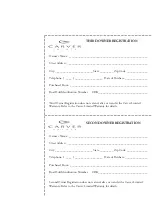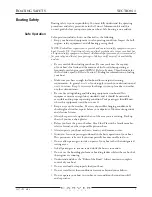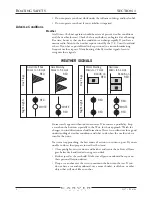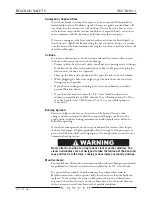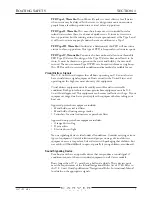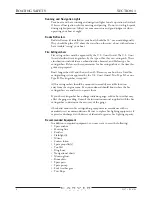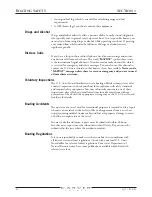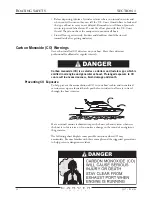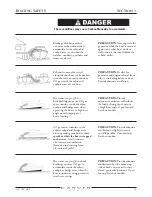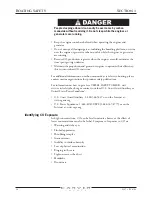
6
3327 • P2 6/06
BOATING SAFETY
SECTION 1
Medical Emergency
No one should act as a doctor if they are not properly trained and educated.
Someone onboard your boat should know first aid. First aid training is available
through your local Red Cross. Keep a fully stocked first aid kit onboard your
boat at all times.
Equipment Failure
Steering, propulsion or control failure can be prevented by having your boat
maintained correctly and checked periodically. If systems onboard your boat do
fail, radio for help or signal with flags and wait until help arrives.
Radio Communication
You are responsible for obtaining a radio operator’s permit and knowing and
following proper rules and procedures. Private boats are not required to have
their radio on at all times. However, if your radio is on, it should be tuned to
channel 16 unless it is being actively used. Channel 16 is the frequency for
emergency calls or initial calls between boats. After establishing contact on
channel 16, change your frequency to channel 22.
More information on radio communications can be found in
Chapman’s Piloting
.
Distress Signals
The operator is required to lend assistance to a craft in distress as long as your
life or boat is not put in harm’s way in the process. Good Samaritan laws protect
you from any liability incurred while giving aid.
Safety Equipment
NOTE:
Federal law requires you to provide and maintain safety equipment onboard
your boat. Consult U.S. Coast Guard, state and local regulations to ensure your boat
has all required safety equipment onboard. You must learn about any additional
recommended equipment before operating the boat.
Personal Flotation Devices (PFDs)
There must be one U.S. Coast Guard-approved wearable personal flotation
device of Type I, II, or III for each person onboard your boat. The PFDs must
be readily accessible and in serviceable condition. They must also be of a suitable
size for each person onboard. Three PFDs (two wearable and one throwable) are
required regardless of the number of persons onboard.
W
ATER
S
URVIVAL
C
HART
Water
Temp. (°F)
32.5
32.5-40
40-50
50-60
60-70
70-80
Over 80
Exhaustion
Unconsciousness
Under 15 min.
15-30 min.
30-60 min.
1-2 hr.
2-7 hr.
3-12 hr.
Indefinite
Expected Time
of Survival
Under 45 min.
30-90 min.
1-3 hr.
1-6 hr.
2-40 hr.
3 hr.- Indefinite
Indefinite
Summary of Contents for 380 SPORT
Page 1: ...HIN CDR _________________ 380 Sport Owner s Guide 2007 Version 1 ...
Page 2: ......
Page 4: ......
Page 6: ......
Page 8: ......
Page 28: ......
Page 40: ...28 3327 P2 6 06 DC ELECTRICAL SYSTEM SECTION 2 DC SCHEMATIC 3327 324 002 5 12 7 05 ...
Page 54: ...42 3327 P2 6 06 AC ELECTRICAL SYSTEMS SECTION 3 AC SCHEMATIC 3327 300 015 2 9 04 ...
Page 108: ......
Page 122: ......
Page 124: ...112 3327 P2 6 06 WARRANTY AND PARTS SECTION 9 Hatches ...
Page 129: ...3327 P2 6 06 117 WARRANTY AND PARTS SECTION 9 Bill of Material ...
Page 130: ......
Page 131: ...3327 P2 6 06 119 WARRANTY AND PARTS SECTION 9 Carver Limited Warranty ...








